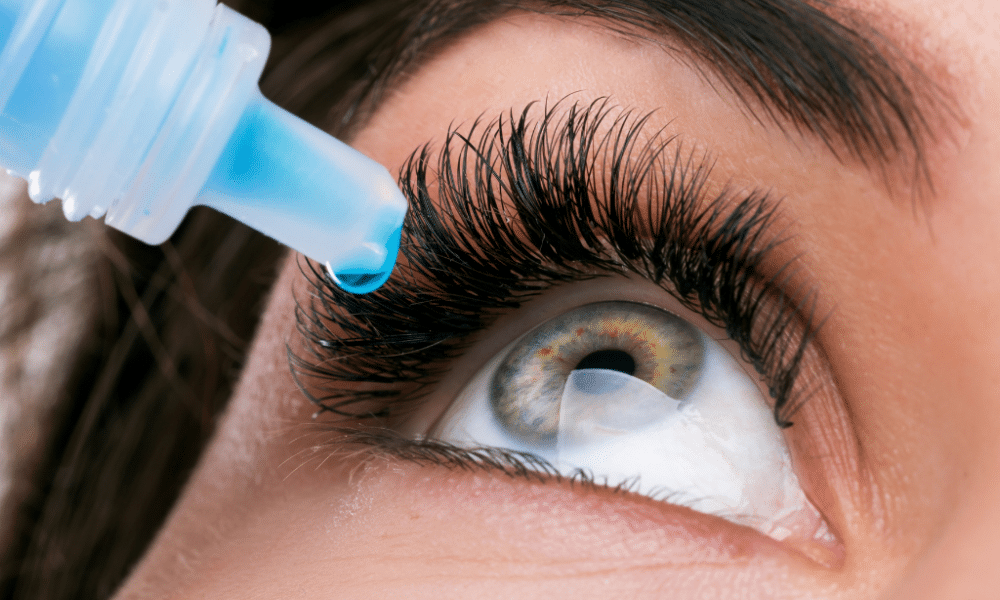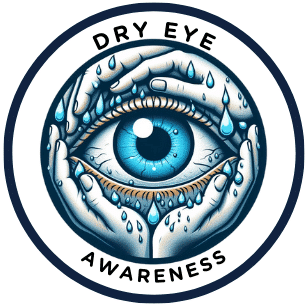
Millions suffer dry eye’s discomfort & blurry vision. This guide explores diagnosis, treatment options (meds, lifestyle changes), emerging innovations, & navigating your treatment journey for clearer, more comfortable vision
I know firsthand how pervasive and bothersome dry eye disease can be. It’s a condition that plagues millions across the country, making simple activities like reading, using a computer, or being in windy conditions a challenge. More than just an annoyance, it’s a disruption of day-to-day life with symptoms such as a gritty or sandy feeling, stinging and burning sensations, and paradoxically, bouts of overly watery or dry eyes.
Beyond discomfort, these symptoms often come with a visual disturbance that can throw off my focus and make precision tasks unnecessarily difficult. It’s not surprising that I hear about the frustrations this condition causes nearly every day. It’s a widespread issue, and its impact on quality of life can be significant, affecting not just physical comfort but also emotional well-being.
With the direct experience of the condition’s impact in mind, understanding the journey towards a proper diagnosis and effective treatment is key. In the next section, I’ll explore why pinpointing the right treatment for dry eyes and related ocular surface diseases is not always straightforward, and why a personalized approach is often necessary for genuine relief.
The Challenge of Diagnosing and Treating Dry Eyes
Pinpointing the exact cause of dry eye disease is a sophisticated task. Physicians categorize this condition as part of a group known as ocular surface diseases (OSDs), an umbrella term that includes a variety of eye afflictions, each with its nuances. Treating dry eye effectively is often complex because it may stem from multiple sources. To complicate matters further, the symptoms can overlap with other OSDs, making a one-size-fits-all solution impractical.
When you step into an eye doctor’s office with symptoms of dry eye, they will likely conduct a thorough examination. This isn’t just a quick glance with a light; it involves specialized tests. These can range from measuring tear production using Schirmer’s test to imaging the meibomian glands with sophisticated equipment. Such detailed diagnostics are critical because they identify the underlying issues causing your discomfort.
It’s not just about medications. Treatment often includes adjusting daily habits and environment. This could mean using a humidifier, taking frequent screen breaks, or even adjusting your diet. Yet even with these efforts, finding relief can require patience and a trial-and-error approach. Comprehensive treatment often means combining these lifestyle adjustments with effective prescription options.
Creating a personalized treatment plan which addresses the unique aspects of your condition is crucial. You and your doctor will work together to find the right combination of therapies that bring relief, improve your eye health, and thereby, your quality of life.
The Current Landscape of Prescription Medications
Dry eye syndrome doesn’t just blur your vision; it can cloud your entire day with discomfort. That’s why recognizing FDA-approved prescription options is crucial. Medications such as Tyrvaya, Restasis, Cequa, Xiidra, and Eysuvis have been green-lit to address this condition. Each works differently, but they share a common goal: to reduce inflammation and support the production of your natural tears.
Inflammation is a key player in dry eye disease. It disrupts the healthy production and maintenance of tears, leading to the symptoms you may know all too well: burning, grittiness, and a sensation akin to a sandy windstorm in your eyes. The mentioned medications strategically target this inflammation to help get your tear film back in balance.
It’s key to have an honest discussion with your eye doctor about what to expect, weighing the pros against the cons. Effectiveness varies from person to person, and it’s a journey you’ll ideally embark on with their guidance.
Exploring Emerging Treatment Options and Clinical Innovations
My focus now shifts to the frontier of dry eye treatment, and it’s here where innovation spells hope for millions. Emerging therapies in development aim to address the shortcomings of existing medications, promising a future where relief isn’t just a possibility, but a reality for those suffering from dry eye syndrome.
One promising area is the development of new cyclosporine based anti-inflammatory drugs. Unlike traditional treatments, these work to combat the inflammation that often lies at the heart of dry eye discomfort. What’s compelling about these drugs is their potential to offer significant relief without the burden of side effects that come with some current therapies.
Another critical advancement is eye drops designed to stabilize the tear film and reduce evaporation. Evaporation is a primary contributor to dry eye symptoms, and having an option that tackles this head-on could be game-changing for sufferers. It’s not just about providing moisture; it’s about ensuring it lingers to soothe the eyes.
Patients with meibomian gland dysfunction may find solace in ointments intended to prevent protein deposits from obstructing the glands. By maintaining clear meibomian glands, these treatments aim to ensure a healthy oil layer in tears, fundamental to preventing dryness.
Moreover, the battle against ocular surface diseases extends to fighting Demodex mites—the culprits in some cases of blepharitis. Eradicating these mites is crucial, and targeted medications are being developed to do just that, offering relief from the inflammation and irritation they cause.
Above all, the perspective of dry eye treatment continues to broaden with options like Reproxalap. This non-steroidal therapy brings a new edge to combating allergic conjunctivitis symptoms without the side effects associated with steroid use. Then there’s OCS-02, attracting attention for its potential in relieving dry eye without the complications of steroids.
As these treatments make their way through clinical trials and towards FDA approval, the anticipation among eye care professionals and patients alike is palpable. The collective hope is that these therapies will address the underlying issues that have, until now, made dry eye syndrome such a challenge to manage effectively.
Navigating Treatment: Compliance, Insurance, and Patient Care
When it comes to dry eye disease, finding a treatment that works for you is important. But this journey doesn’t end with a prescription. There’s a crucial element that often goes under-discussed: adherence to the medication regimen. Consistent and regular use of prescribed eye drops is essential if you’re aiming for any degree of symptom relief. Skipping doses or inconsistent use can undo progress, sometimes requiring you to start the battle anew.
While understanding your prescription is important, it’s just the start. For many, navigating the maze of insurance coverage to gain access to these medications is a challenge in itself. You should consult your insurer to understand which treatments are covered under your plan. It’s crucial to know what options are financially viable for you, as this can impact your willingness and ability to stick with a treatment long-term.
Remember, every treatment journey is deeply personal. What works for one individual may not work for another. This underscores the importance of having open and ongoing dialogue with your eye doctor. They are your ally and guide in this process, helping you to adjust treatments as needed and addressing any concerns or side effects you may experience.
Lastly, beyond the prescriptions and medical appointments, it’s your daily care routines that can make a significant difference. Incorporating humidifiers at home, taking screen breaks to rest your eyes, and wearing sunglasses outdoors are all part of a holistic approach to managing dry eye symptoms effectively.
I encourage you to grasp these actionable steps firmly, engage actively with your healthcare provider, and approach your treatment plan with the persistence and patience it demands. Ultimately, it is this combination of medical advice, personal commitment, and practical lifestyle changes that paves the way towards a more comfortable life with clear and comfortable vision.


I really enjoyed your article on prescription medications for dry eye syndrome! The way you explain the importance of targeting inflammation to improve tear production is super clear and helpful. I especially appreciated the section on how medications like Tyrvaya and Restasis work differently yet aim to balance the tear film. I’m curious, how long does it typically take to notice improvements with these treatments? Also, your insights on emerging therapies were fascinating—do you have any personal favorites among the new treatments being developed?
Thank you for your comment. In terms of how long it takes to see improvement with these treatments it varies. However, most people see improvements within a few weeks to 1.5 months and the improvements continue after that.
In regards to emerging therapies it is hard to say which are my favorites right now because they are in development. However, I am sure many new therapies will emerge and they may all be valuable options for treating dry eyes. In my experience, the proper therapy can vary among patients. What works for one patient may not work as well for another. This is the reason it is so important to get regular eye examinations so that your eye doctor can tailor the therapy for your unique needs. So to answer your question I do not think I will have a favorite but rather new options that will be equally valuable when customizing dry eye treatment for my patients.
Thank you again for your thoughtful comment and question.